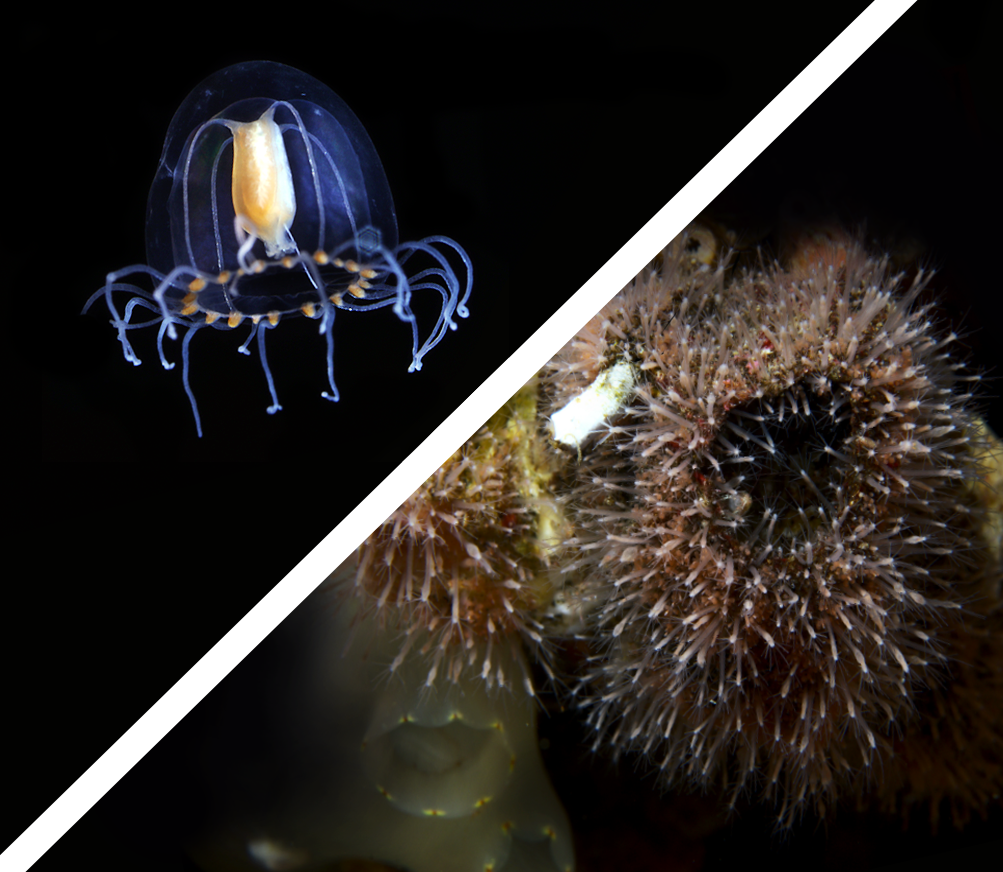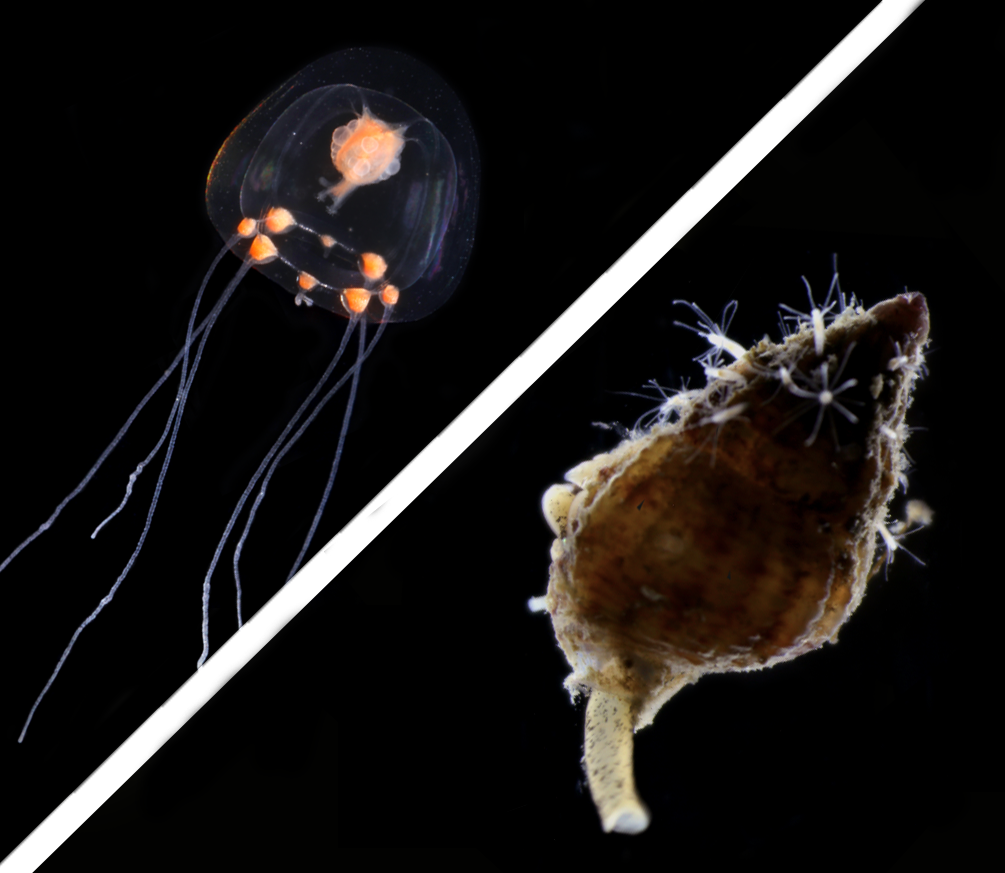Podocoryna
Almost all species in Podocoryna have a hydromedusa stage in their life cycle and all hydractiniid hydromedusae found in Norway belong to this genus. Podocoryna jellyfish are small and inconspicuous, but they are widespread and can be relatively common at certain times of the year. Most hydroid colonies of Podocoryna are very similar to each other, and in many cases it is not possible to identify them unless the mature medusae are examined. Three species occur in Norway.
Identification
In Norwegian waters, Podocoryna hydromedusae are bell-shaped or almost spherical jellyfish that range in size from 1 to 4 mm. They are the only Norwegian jellyfish with a combination of simple tentacles (i.e. not in groups) and lips extending into oral arms that end in clusters of stinging cells. Podocoryna hydromedusae are called medusa buds while they are still developing, because they look like small bulbs budding from the gonozooids. After liberation from the colony the hydromedusae are able to swim immediately.
Podocoryna hydroids have the typical characteristics of the family, resembling each other and other hydractiniids so closely that identification is often not possible. In some exceptional colonies, the distribution of the spines may give some indication of the species. Fully mature colonies are usually smaller than those in Hydractinia and Schuchertinia and they may have a more delicate appearance as well as lacking strong and conspicuous spines, but identification without the hydromedusae is still unreliable.
Look-alikes
The hydroids can be confused with each other and with young colonies of other hydractiniid genera. The hydromedusae are easier to identify, but in Norwegian waters young Podocoryna jellyfish may be difficult to tell apart from young specimens of Rathkea octopunctata and Lizzia blondina. The tentacles of larger hydromedusae of the latter two species will be in groups, in contrast to the always singly occurring tentacles of Podocoryna, and Lizzia possess oral tentacles originating above the mouth, rather than oral arms. The jellyfish of R. octopunctata and L. blondina also reproduce asexually by having buds of small medusae on the manubrium, a characteristic that is never present in Podocoryna medusae.
Biology, ecology and behavior
Podocoryna colonies grow on a wide array of substrates including a variety of shells (either inhabited by snails or hermit crabs), polychaete tubes, barnacles, and other animals. In Norway the colonies are found mostly in shallow (<200 m) waters, while the hydromedusae are often caught near the surface especially in spring, summer and autumn.
Taxonomy
Traditionally, the presence of hydromedusae was the defining characteristic of Podocoryna, but recent studies have shown that at least one species in the group (P. pruvoti) lacks the jellyfish stage and instead reproduces through reduced medusoids. In addition, some species currently placed in other hydractiniid genera also produce medusae (e.g. Hydractinia pacifica). Because of this, the genus Podocoryna is currently delimited based on DNA data.
Podocoryna was for many years considered a synonym of Hydractinia, and as a result a lot of information for Podocoryna species can be found under the latter name. In addition, the genus name was historically misspelled as Podocoryne, and a bulk of records for Norway and North Atlantic waters exist under this incorrect name.
References
Miglietta MP, Schuchert P & Cunningham CW (2009). Reconciling genealogical and morphological species in a worldwide study of the Family Hydractiniidae (Cnidaria, Hydrozoa). Zoologica Scripta 38(4):403–430.
Schuchert P (2008). The European athecate hydroids and their medusae (Hydrozoa, Cnidaria): Filifera Part 3. Revue suisse de Zoologie 115(2):221–302.
Schuchert P (2012). North-West European athecate hydroids and their medusae: keys and notes for the identification of the species. Field Studies Council. Synopsis of the British Fauna (New Series) No. 59. 364 pp.


